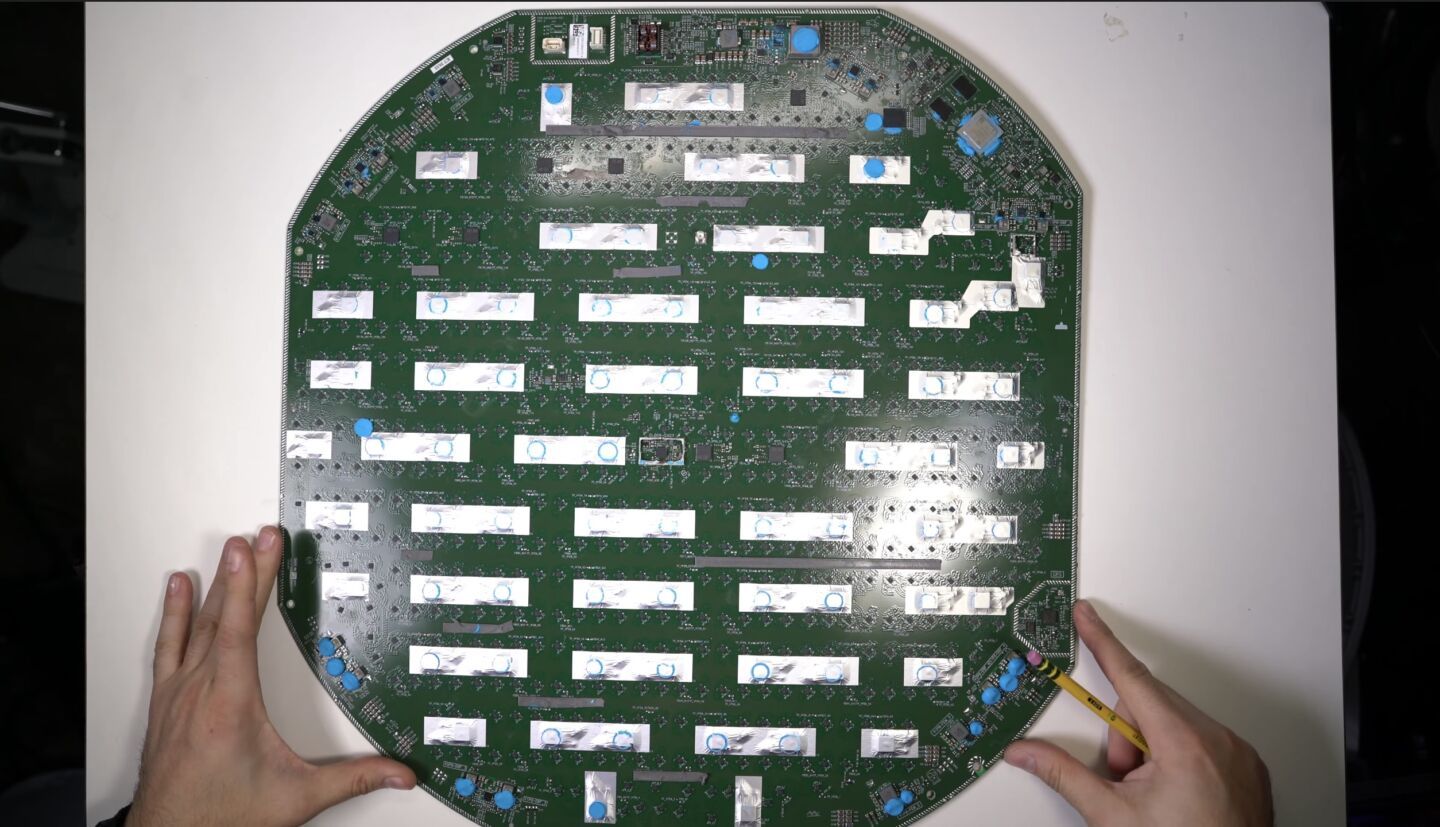“It’s rare to see something of this complexity in a consumer product.”
Engineer Ken Keiter recently came into possession of one SpaceX Starlink user terminal, the satellite dish that SpaceX nicknamed “Dishy McFlatface.” But instead of plugging it in and getting Internet access from SpaceX’s low Earth orbit (LEO) the teardown process destroyed portions of the device. “I would love to test out the [Starlink] service, and clearly, I didn’t get a chance to, as this went a little bit further than I was intending,” Keiter said toward the end of the 55-minute teardown video he posted on YouTube last week, Keiter decided to take Dishy apart to see what’s inside.
Keiter, who lives in Portland, Oregon, was impressed by the Starlink team’s work. “It’s rare to see something of this complexity in a consumer product,” he said about the device’s printed circuit board (PCB), which he measured at 19.75″ by 21.5″.
Let’s take a look at what Keiter found inside Dishy.
The first layer
With the satellite dish face down, Keiter pulled off the back panel and found the motor assembly that Dishy uses to reposition itself to get a direct view of SpaceX satellites:
[ngg src=”galleries” ids=”8″ display=”basic_thumbnail” thumbnail_crop=”0″]Keiter was intrigued by the Ethernet cable. “Many people have been asking why you can’t replace the cable on your own, ‘why can’t I just have a jack that I plug my own cable into in the back of Dishy?’ Well, there’s a compelling reason for this, and it has to do with power delivery,” Keiter said.
Keiter said that power over Ethernet is usually limited to about 30 watts, but new standards allow for greater power delivery that can meet Dishy’s need for about 100 watts. He said that Dishy uses a thick, “well-shielded” Ethernet cable to deliver data and the necessary power without over-heating.
Dishy suffers harm
Keiter found Dishy’s PCB and phased-array antenna assembly inside the satellite dish, all in one large disc protected by a metal shield. “This is the entire brains of Dishy, and look how thin it is. It’s insane,” he said. He also noted that “there are excellent RF reasons for having a massive shield over the whole back of it.” The metal shield was attached to the PCB by lots of glue, and Keiter had to damage the shield to detach it:
[ngg src=”galleries” ids=”9″ display=”basic_thumbnail” thumbnail_crop=”0″]PCB and antenna array
After removing the shield, Keiter examined the PCB and antenna array:
[ngg src=”galleries” ids=”10″ display=”basic_thumbnail” thumbnail_crop=”0″]Hackaday wrote in an article on Keiter’s teardown, it “appears that the antenna is a self-contained computer of sorts, complete with ARM processor and RAM to run the software that aims the phased array. Speaking of which, it should come as no surprise to find that not only are the ICs that drive the dizzying array of antenna elements the most numerous components on the PCB, but that they appear to be some kind of custom silicon designed specifically for SpaceX.”Generally speaking, Dishy obviously is not user-repairable. But Keiter said he could imagine some people putting the PCB and antenna array into a different enclosure. “You could design, realistically, your own base for Dishy pretty easily, and I’m guessing that is in fact, what some people may choose to do,” he said.
With a Starlink beta having recently begun, SpaceX is seeking US permission to deploy up to 5 million user terminals and is already authorized to deploy 1 million. SpaceX is charging $499 for the user terminal and $99 a month for broadband service.
